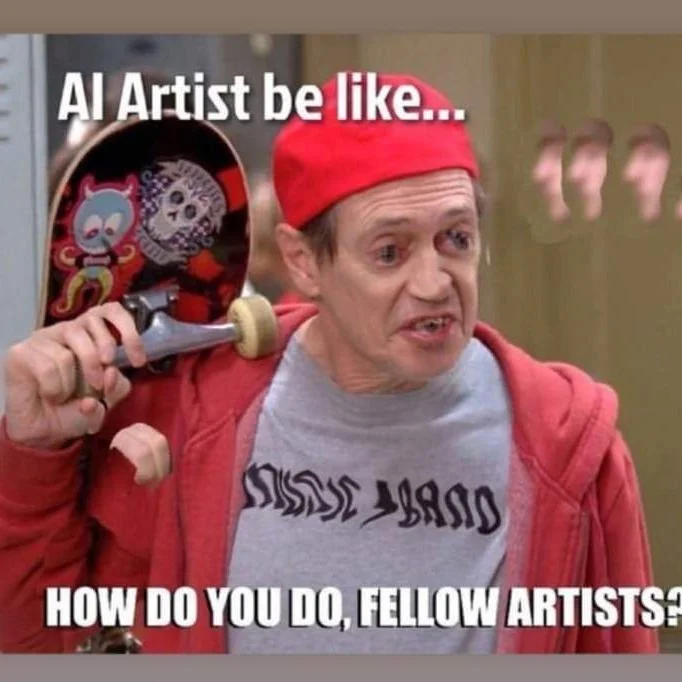You know that fun little new avatar creator, the Lensa app, that’s exploding in popularity right now? It’s made your new favorite avatars on your social media, it’s cheap, and best of all, you can tell it to make up to 50 avatars in a variety of art styles. Is it just harmless fun? It allows anyone to input images of their favorite artists’ work and a selfie, and then spits out an image as if it were commissioned by them. Except that your favorite and cherished artist doesn’t know about it and doesn’t see a dime in compensation for the use of their work. And then those images can be used by someone else too. Again and again and again. It’s my opinion the AI image synthesizer is a completely different category of phase shift than what the camera obscura, the daguerreotype, and Photoshop was to art. I think it’s an art killer. The MidJourney software is certainly threatening the livelihoods of many hardworking and brilliant illustrators I know personally. And it may soon affect me too.
Social media is currently abuzz with stories about bots programmed to crawl the web for certain keywords so that others can harvest the art and make their own t-shirts, products, mugs, bypassing licensing fees or having to get explicit permission. AI “design" companies” are now offering very cheap book covers to self-publishing authors, basing the designs and style on the authors’ favorite genre artists. With a few keywords, album covers are generated for musicians’ album covers at a tiny fraction of what it would cost to hire an artist or license an existing image. The business owner of the AI design company may not have had any background or experience as an artist and may have no competency for actual design but they can lean on the abilities of hundreds of artists whose work was inputted in the AI program. It becomes cheap art for people who want art but don’t want to invest in something original and the money ends up in the pocket of the AI app programmers.
So why would any of us creating original art or original ideas share our art with the public or show it on any platform where it could be swiped without any legal recourse ?
Until the law resolves the issue, what can we artists do to protect our IP? People used to buy original art by going and looking at it on a wall in a public or private space. Perhaps that’s where we need to return our work. Except that galleries have been waning; fewer of them exist and those that persist still use some method of showing work online. And their high overhead costs require them to take high commissions from the artists. As a result, many artists have instead put up a virtual gallery space on a personally-branded website to sell work and prints directly.
Perhaps there are some other ways to tackle this problem. One idea: artists could post their hours for Zoom tours of their physical gallery space at certain times of the day/ month/ year. An open house. A serious buyer can arrange an extended private tour and purchase negotiation.
A second idea is to research website design templates that will only show a thumbnail but when you mouse over the thumbnail, it shows you more details up close. I noticed this kind of website approach with ImageKind, a print company that is committed to protecting artist’s IP. There, artists are encouraged to upload the highest quality image for prints, but the file is stored and protected on their servers and only a thumbnail is generated for public use. This way, it protects not only the artists’ work, but ImageKind’s printing business.
I’m still mulling this over as I make eyeball mugs and other ceramics and plan large paintings for 2023. If you have any other suggestions about what artists could do to fight against the AI pirates in this ever-escalating barrage of art theft, I’d love to hear from you in the comments or email.
Chin up, gentle Art Gnome. We’re still the goose that lays the golden egg and that’s some leverage.
